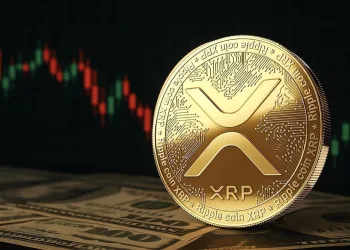- A major tsunami in Japan could trigger a rapid yen appreciation by forcing USD asset liquidations through the reverse carry trade.
- Chip manufacturing and energy infrastructure on Japan’s coast remain vulnerable, risking major global market disruptions if damaged.
- Bitcoin dominance is consolidating, and combined with FOMC week and seismic alerts, markets face heightened volatility risk.
As global tectonic activity intensifies, financial markets may soon experience unexpected crypto effects. Several tsunami warnings across the Pacific are circulating, indicating that safety is not the only concern. Japan, which has always been a global center of finance and semiconductor fabrication, is now at risk of a new mega-tsunami. Having been on tsunami watch after a deep-ocean quake, Hawaii escaped being hit by the smallest margin, though the tension is still present.
If Japan is struck, the resulting financial consequences could extend far beyond local damage. As a huge negative shock might trigger a sudden capital repatriation potentially via the reverse carry trade. This unraveling has the potential to support the Japanese yen and cause instability in world equity and cryptocurrency markets.
Japan’s Coastal Risks and a Potential FX Shock
The yen has remained suppressed for years due to the widespread carry trade, where investors borrow in yen to buy higher-yielding dollar assets. However, if a natural disaster strikes Japan’s coastal infrastructure, especially the energy grid, institutions may be forced to liquidate foreign holdings. Proceeds from USD-denominated assets would convert back into yen, rapidly strengthening it. This scenario would unwind long-standing carry trade positions and destabilize foreign exchange markets.
Such a reversal would coincide with aggressive moves in the U.S. dollar index. A rising dollar during mass liquidation could compress liquidity worldwide. For countries aligned against the dollar, particularly BRICS members, the scenario would require urgent coverage of dollar exposures. Energy imports, sovereign debt payments, and FX reserves may need recalibration, causing a chain reaction in emerging markets. The economic implications tie directly to Japan’s coastal vulnerability, as many renewable energy systems remain at sea level.
Tectonic Activity Sparks Fears of Market-Wide Liquidations
Coinciding with rising tectonic activity, market charts are showing familiar signs. Bitcoin fell significantly out of dominance before another wave of altcoins in 2021. At the moment, BTC dominance is consolidating once again at a significant decline, hinting at a structural change in market flows. Although not directly causal, analysts watch these patterns closely. The similarity in price action, during a week with heightened seismic alerts, raises concerns.
Notably, any disruption to Japan’s chip manufacturing sector could mirror the 2011 supply chain shock, with deeper ramifications this time due to crypto’s integration into tech-driven financial systems. The financial landscape now braces for multiple catalysts. The Federal Open Market Committee meets this week, introducing another variable.
The results of the FOMC tend to move liquidity in and out of crypto, equities, and bonds.Therefore, a gradual rise in tectonic risks would provide fuel to capital repaid, power up the yen, and introduce shocks to global liquidity, fanning volatility across equities and crypto and revealing the tenuous ties between geophysics and financial markets.














